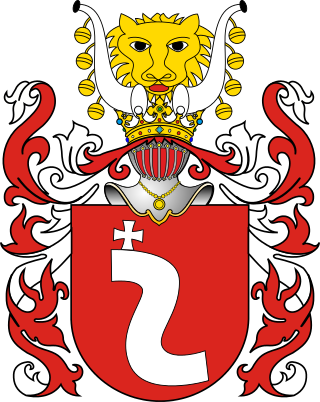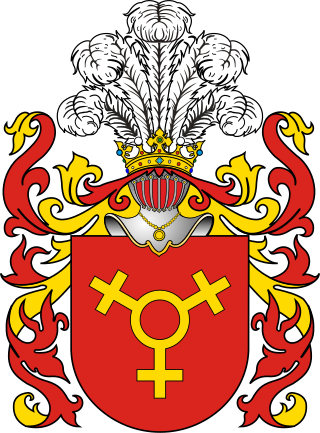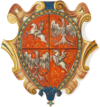| Krzywda | |
|---|---|
 | |
| Battle cry | Krzywda |
| Alternative name(s) | none |
| Earliest mention | 16th century |
| Families | 111 names [1] Antoszewicz, Antuszewicz, Augustowicz, Bajkowski, Baykowski, Bejdo, Beyd, Białojezierski, Bogucki, Bogumiłł, Bogusławski, Bohumił, Borkowski, Chmara, Chmura, Chrząstkowski, Chrząstowski, Czarnocki, Dajnowski, Dalkiewicz, Danowski, Daynowski, Dembowicz, Dinowski, Dobrowolski, Dorożyński, Duńczewski, Gałązkowski, Garliński, Gawryłkowicz, Gawryłowicz, Gilewicz, Gorliński, Goski, Grochowski, Grodecki, Hawryłkiewicz, Huściło, Kierzkowski, Kieszkowski, Kiszkowski, Kobyliński, Koiszewski, Koiszowski, Kozikowski, Krasnodębski, Kruszyński, Ksieniewicz, Kudrycki, Kudrzycki, Kulczycki, Lazowski, Listopacki, Listopadzki, Łapa, Łappa, Łazeński, Łazewski, Łaziński, Łazowski, Łoziński, Łozowski, Maciorkowski, Milik, Moniuszko, Muczyński, Nahojewski, Nahojowski, Nahujewski, Niewęgłowski, Obniski, Panasiewicz, Pisulski, Pluto, Pogorzelski, Poleski, Polewski, Ragniewicz, Ratyński, Rojek, Rzewuski, Sankowski, Santecki, Santocki, Sańkowski, Sienicki, Siennicki, Siękowski, Soczycki, Soszycki, Soszyński, Stankiewicz, Suchodolski, Szańkowski, Szarkiewicz, Szarkowski, Szczubielski, Ślaski, Święcicki, Tarasewicz, Tarasowicz, Trzciński, Tubielewicz, Tubilewicz, Węglowski, Węgłowski, Wróblewski, Zazuliński, Zgorzelski, Znamięcki, Znaniecki, Żnajedzki. Contents |
| Cities | Ratyniec |
| Gminas | Gmina Siennica |
Krzywda is a Polish coat of arms. It was used by several szlachta families. The homeland of this coat of arms is probably the village Krzywda in Podlaskie.





















